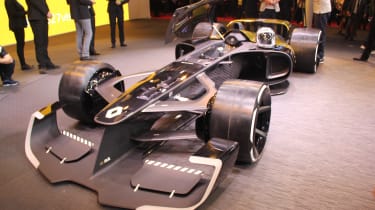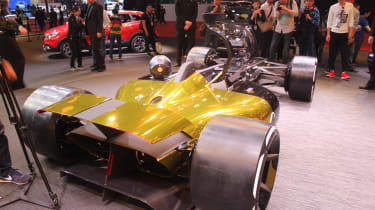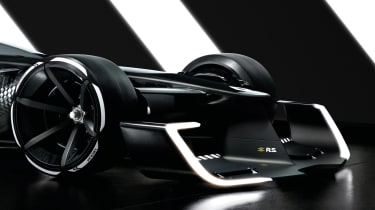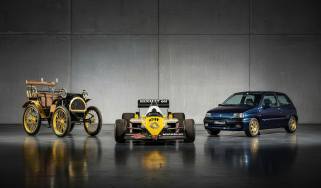Renault R.S. 2027 Vision Concept gives glimpse of F1's future in Shanghai
The R.S. 2027 Vision Concept is Renault's take on the future in F1 using its 40 years of experience
Renault has given us an insight into where it believes Formula 1 is headed in the future with the R.S. 2027 Vision Concept. Revealed at the 2017 Shanghai motor show, the concept is a result of the lessons learnt from Renault’s 40 years in the sport.
Apart from a concrete statement about the French marque’s intended involvement in the future of the sport, this is a fascinating look into where the F1 could go to try and better integrate fans into the experience.
>Click here for our F1 2017 round up
Details like the polycarbonate canopy, clear bodywork and translucent faced helmets are designed to try and connect spectators to the physical side of the Formula One. Seeing the reactions and emotions puts the driver back at the heart of the sport, says Renault.
Designed with Renault’s black and yellow livery as seen on classic Renault racing concept cars like the Espace F1 in 1997, the Renault R.S. 2027 Vision Concept shares many styling cues with Renault road cars, a link the firm is keen to emphasise.
Elsewhere, Renault kept a similar look to current F1 cars during the design process. As such, the 2027 Vision shares a long slim nose, side pods and four open wheels with contemporary F1 cars.
From there however, the Renault design team threw the kitchen sink at the car, introducing multiple movable components like an active rear wing and pop-up roll bars to create the sleek silhouette. The canopy is a direct response to the growing safety concerns being felt within the F1 community, providing a far more elegant solution to the ‘halo’ concept currently being put on the table.
Mechanically, the 2027 Vision actually differs less from the current F1 layout than the look suggests, with a similar 670bhp turbocharged V6 internal combustion engine sat behind the driver, but this time supplemented with two electric motors, which divide power between all four wheels. Together the power unit of the R.S. 2027 Vision is a whole Megawatt, or 1000KW (1341bhp), paired with a 600kg weight limit.
With four-wheel drive, torque vectoring and four-wheel steering, the car should develop the extra traction required to control the hike in horsepower, although the task of trying to control that power might be an entertaining component of this fantasy 2027 race series.
Finally, Renault has indicated the use of autonomous functionality to control the cars in safety car and pit lane situations, taking away the threat of human error in non-competition components of the race. Although a pure fantasy at this point it is an interesting exercise to have gone through as we head towards the next round of technical regulations due to change in 2021.
The development of F1 cars could be said to have stalled in recent years, and as talks begin about the future of the sport Renault is intent on having its say on where things go in the future.









